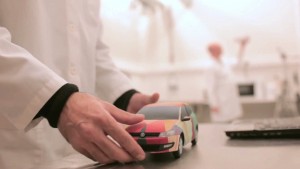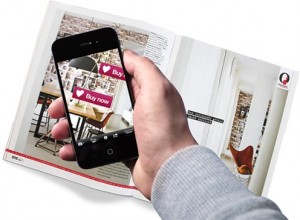Branding can be hard at the best of times, especially when there are so many different elements to consider. It can also become a little overwhelming when the market is constantly changinging. With new technologies entering the market and trends starting weekly, brands are having to adapt rapidly.
In this blog, we’ll take a look at some of those changing elements that have the biggest impact on brands.
Technology
Ten years ago, digital marketing was very different. For many brands just having a social presence was enough as the market was still developing. And when it came to choosing your social channels, only a handful of popular options were available. However, there are now over 2.4 billion active users of social media around the world and this has meant brands are now having to compete more fiercely for just a few seconds of an audience’s attention.
Today’s consumers now expect to be, and are, engaged with brands on many different digital channels and touchpoints. This has made the customer journey a more involved one and with wearable tech such as the Apple Watch and Google Glass becoming more mainstream, marketers once again have to grapple with new technology. Declared as the next big thing, wearable technology can help reduce the time between intention and action.
Given how quickly the wearables market is developing, marketers need to start preparing to target consumers through this new channel. Currently 1 in 7 people in the UK own wearable technology and the trend is set to continue. As a result, consideration needs to be taken into making marketing messages more glanceable so that messages can be delivered on smaller screens with enough relevant information to encourage someone to discover more by clicking through on their smart phone.
This is just an example of things to come but the point is, technology is constantly evolving so marketers need to be constantly aware of how they are going to reach consumers through these new channels.
Audiences
Every brand has an audience but as any good marketer will tell you, audiences evolve constantly. Everyday their needs and wants will change and people today don’t have the same concerns or needs as they did say 5-10 years ago. This can make it increasingly difficult for brands to target their consumers in the same way that might have appealed to them last month.
After major events such as the 2008 recession and more recently Brexit, people are becoming more savvy with their money. There have also been wider divisions in politics, culture and taste across generations more recently. Therefore, brands need to consider the value of their products more than ever before. Not just in terms of money, but also in terms of what their brand represents.
In the past, consumers have been broken down into “lazy” segments such as ‘millennial’ or Gen Z’ but there are potentially 15 year age gaps within these segments. To get a better understanding of audiences, these segments need to broken down even further. Brands need a clearer understanding into the nuances that make each consumer an individual. By understanding their consumers beliefs, values and needs; they can effectively reach out to their audience in the most appropriate manner.
Tastes
As consumers, we are a very fickle bunch. Our likes and dislikes are constantly changing resulting in endless new products hitting our shelves to help feed our appetites.
When certain goods go out of fashion or people’s tastes and preferences no longer remain favourable to them, the demand for them decreases. The level at which a customer desires your product not only affects your demand curve, but essentially your overall success as a brand. One way to stay ahead of the curve is by altering the product or service. This ensures the demands of consumers are always met meaning they don’t have to look towards other brands to get what they want.
Apple is a brand that is very good at “reinventing” itself. They very quickly realised that to stay at the forefront of technology development, they needed to listen to their customers and adapt. With Apple bringing out a new iPhone more or less annually, they have been able to add/change/remove the elements that their customers like and dislike about their products. They have blown all competition out of the water and now you will struggle to find a household without an Apple product.
Trends
Trends come and go and it can sometimes be difficult to work out which ones are going to stick around. As we discussed in our previous blog post (5 Trends that Should be Shaping your 2017 Marketing Budget), live video is one trend that we think will be making waves in the next couple of months.
Another trend that has stuck around is documenting every waking moment of our days. Breakfast, lunch, dinner and all the bits in between documented on Facebook, Snapchat or Instagram. As they say, a picture paints a thousand words and brands should embrace this power.
People like to get to know the ins and outs of a brand – they’re not interested in just seeing the curated marketing content that has been planned for the past 6 months. By sharing moments as they happen, brands can start building a personality that their consumers can relate to. In turn, this turns consumers into advocates and they begin sharing your story. John Lewis is one brand that has nailed this and they are constantly producing share-worthy visual content – no wonder they are one of the UK’s leading brands.
Brand Centurion
With the elements of branding changing constantly, it can be difficult to manage your brand successfully. With Brand Centurion, you can create marketing and branded-materials in-house and distribute them in a timely manner, allowing you to react quickly to these changing elements. To find out more or to request a demo, call us on 01293 660722.
Written by Liam Beauchamp for Burst Digital, 26/09/2016









